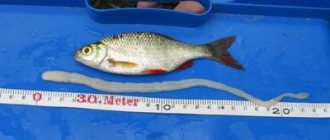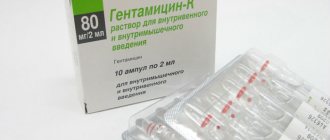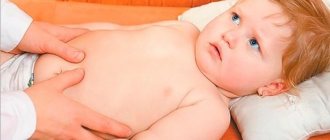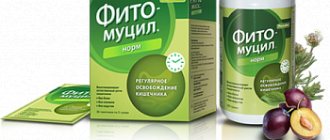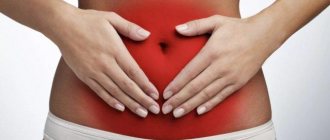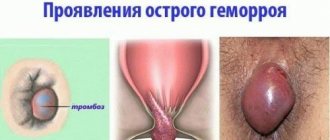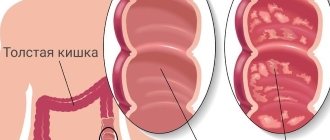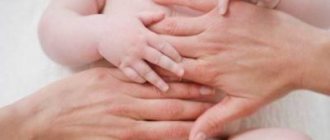Escherichia coli was discovered by the Austrian physician T. Escherich in 1885 and named after him. Based on antigenic and biochemical properties, this microorganism is divided into 2 main types: E. coli and Citrobacter. E. coli are mobile with slightly rounded ends. E. Coli bacteria live in the human intestine as the main components of normal flora. However, there are more than one hundred varieties of pathogenic E. coli. Pathogenic E. coli are divided into four classes: enteropathogenic, enterotoxigenic, enteroinvasive and enterohemorrhagic. Moreover, there are no morphological differences between pathogenic and normal coli bacteria.
Escherichia coli
Intestinal infection is a group of infectious diseases of a bacterial nature that affect the digestive tract, which are accompanied by dehydration, intestinal syndrome and general intoxication.
Increased levels of Escherichia coli are detected in the mucous membranes of the digestive tract in cases of intestinal diseases in newborns and nonspecific ulcerative colitis. Invasive strains of Escherichia are found in inflamed tissues, and the number of microorganisms is correlated with the severity of the inflammatory process in the intestines.
Acute intestinal infection is the second most common among all infectious diseases, second only to acute respiratory infections. Every year, more than 500 million people are diagnosed with this disease around the world.
Types
All coliform bacteria (coliforms) can be divided into opportunistic and pathogenic. There are more than 100 strains of the latter. They are the ones who cause intestinal infections. Among the main types of E. coli are:
- Enteroinvasive. The symptoms of infection are similar to dysentery.
- Enteropathogenic. More often they colonize the small intestine of infants.
- Enterotoxigenic. They cause stomach diseases, the symptoms of which disappear within 3-5 days without drug treatment.
- Enterohemorrhagic. Accompanied by the development of colitis and uremic syndrome, leading to a rapid deterioration in health.
All pathogenic E. coli can cause infectious diseases (escherichiosis). All E. Coli can survive for a long time in the external environment - in feces, water and soil. The bacterium is killed by certain chemical compounds, as well as exposure to temperatures above 70˚C.
Causes of intestinal infection
The causative agents of the disease can be various pathogenic microorganisms, but most often Escherichia coli. Most strains of these gram-negative bacteria are harmless; they are part of the normal intestinal microflora and participate in the synthesis of vitamins and the formation of organic acids.
The disease is caused by virulent strains of Escherichia coli that enter the intestines from the outside. Possible causes of E. coli: consumption of infected vegetables and contaminated water, improper storage of food, insufficient heat treatment of meat, etc.
Infection is possible through dirty hands and any household items, including children's toys. This is why E. coli is most often diagnosed in a child. Young children, exploring the world around them, often put their hands and various objects into their mouths.
An intestinal infection can also be caused by:
- other gram-negative bacteria (for example, Shigella, Salmonella, Campylobacter);
- opportunistic organisms (clostridium, staphylococcus, Klebsiella, etc.);
- viruses (rotaviruses, coronaviruses, enteroviruses, toroviruses, adenoviruses, etc.);
- protozoa (for example, Giardia, blastocysts, amoebas).
Methods of infection
E. coli outbreaks are seasonal. Epidemics occur more often in the summer months. Main routes of infection:
- oral-fecal – after contact with water and soil contaminated with feces, as well as with vegetables that grew on it;
- contact-household - from a sick person through common objects (this method is less common than the first);
- from inflamed organs of the genitourinary system;
- transmission of escherichia coli from mother to child during childbirth.
The last method of transmission is the most dangerous, with a large number of complications. A newborn's immune system is weakened, so the body is unable to fight E. Coli. The bacterium multiplies rapidly and attacks the brain, causing meningitis.
The incubation period is 3-8 days.
In newborns, Escherichia coli is hemolytic and lactose-negative. An increase in the level of the first variety should cause concern among doctors. A lactose-negative bacillus must be present in the intestines, but its norm is 105. Exceeding normal values leads to the appearance of undigested food particles in the stool, as well as to alternating constipation and diarrhea.
The main source of E. coli infection is cattle. Along with the animal's feces, bacteria are released that enter the soil and water bodies. Meat that has undergone insufficient heat treatment, as well as unpasteurized milk, is a source of infection.
Predisposing factors for infection are failure to comply with personal hygiene rules, a decrease in the body's protective properties, an unfavorable epidemiological situation, and visiting countries with high levels of water and soil pollution.
Symptoms of E. coli
Once in the body, E. coli begins to actively multiply, causing the intestinal mucous membranes to become inflamed and digestive processes to be disrupted.
The main symptoms of E. coli in adults and children:
- gastrointestinal manifestations - diarrhea (profuse, watery, yellowish stools), flatulence, abdominal pain, nausea, decreased appetite, vomiting (in infants - frequent regurgitation), blood in the stool, weight loss;
- infectious-toxic signs: increased body temperature, weakness, lethargy, respiratory failure.
Diarrhea itself is potentially dangerous, especially for young children, because if it lasts for a long time, it causes dehydration and leaches vital elements from the body - potassium, calcium, sodium. Dehydration is manifested by increased thirst, sunken, dry eyes, decreased diuresis, dry mucous membranes and skin.
Diagnosis of Escherichia coli
At the first consultation, the doctor finds out the possible source of infection (water, food, etc.) and the intensity of clinical symptoms, evaluates the epidemiological history of the disease and hemodynamic parameters. Assessing the degree of dehydration of the body is of great importance, especially in children, since the amount of fluid lost largely determines the severity of the intestinal infection.
The main diagnostic test is bacteriological culture. The research material can be feces, urine, smears from the surface of the genital organs. It is placed in a certain nutrient medium, where Escherichia reproduces well, and later the number of colonies formed is counted. The same colonies that were grown are tested for sensitivity to antibiotics.
To confirm the diagnosis, other laboratory tests can be carried out: coprogram, PCR, general urine and blood tests, urine culture, serological tests, etc.
In case of a generalized form of intestinal infection, culture of blood, cerebrospinal fluid and urine is carried out.
Differential diagnosis is carried out to exclude diseases such as food allergies, acute appendicitis, intestinal obstruction, pancreatitis, lactase deficiency, Crohn's disease, biliary dyskinesia. If necessary, the patient is referred for consultation to a gastroenterologist.
Antigens
Escherichia coli contains O-, K- and H-antigens. O (somatic) antigens in K. p., Shigella and Salmonella have similar chemical properties. structure and are associated with lipopolysaccharide (LPS) of the cell wall (see Lipopolysaccharides). Immunohim, the specificity of the O-antigen is determined by the composition of hexasaccharides in the repeating units of the terminal section of the polysaccharide chain, the other end of which is connected through 2-keto-3-deoxyoctonate (KDO) to lipid A (I). Thus, the structure of E. coli 0111:B4 LPS is presented as follows:
Designations: Col - colitosis, Gl - glucose, Gal - galactose, N-AcGl - N-acetylglucosamine, Hep - heptose, x - unidentified component.
The amount of sugars in the same terminal link, as well as the number of determinant links, varies among different Escherichia serogroups. The specificity of O-antigens K. p. is usually determined in the agglutination reaction (see) with O- or OB-agglutinating coli sera on a glass slide, less often by other methods.
K-antigens denote surface antigens that are associated with the capsule and with LPS K. p. They are divided into A-, B- and L-antigens, which differ from each other in sensitivity to high temperature and chemicals. agents. The highest resistance to heat (up to 100° for 2.5 hours), alcohol and 1 N. HCl solution has the A-antigen, the least stable is the L-antigen. In most K. items, K-antigens are acidic polysaccharides containing uronic acids. Some K antigens (K 88) contain only protein. K. items having K-antigens are not agglutinated by homologous O-coli serum. This feature is inherent in living cultures and is lost after they are boiled or autoclaved. The presence of K-antigens is also established in the adsorption reaction of agglutinins and in immunoelectrophoretic studies (see Immunoelectrophoresis).
N-flagellar, or flagellar, antigens are inherent in actively motile strains. They are associated with the flagellin protein and determine the typical immunochemical specificity of K. p. H-antigens are thermolabile. They are completely destroyed when boiled for 2.5 hours.
In K. the item is described approx. 170 O-antigens, 97 K-antigens and 50 H-antigens. Strains of K. p., equipped with cilia, contain protein ciliated antigens. They are detected in the hemagglutination reaction (see).
St. 123 O-serological groups of Escherichia are connected to each other by unilateral or bilateral antigenic bonds. More than 56 serogroups have antigenic connections with Shigella and 42 serogroups with other representatives of the Enterobacteriaceae family.
K. items are designated according to antigenic formulas: the number of the O-antigen is placed in the first place, the number of the K-antigen is placed in the second place, and the number of the H-antigen is placed in the third place. The type of K antigen is indicated in parentheses. For example, K(A), K(B) or K(L). The numbers of O-, K- and H-antigens are separated by colons. According to antigenic formulas, the studied strain belongs to a certain serol group [for example, E. coli 026:K60 (B6)] and serol type [for example, E. coli 026:K60 (B6):H2]. Differences in the receptors (factor composition) of O-antigens are indicated by small letters. alphabet. For example, serogroup 0111:K58 (B4) is divided into 0111a,b:K58(B4) and 0111a,c:K58(B4).
Treatment of E. coli
E. coli in a child under 5 years of age is a reason for hospitalization.
Therapy for intestinal infections is always comprehensive, aimed at eliminating the etiological agent, rehydration, restoring water and electrolyte balance, removing accumulated toxic products and eliminating the symptoms of the pathological process.
To eliminate pathogenic bacteria, patients are prescribed antiseptic and antibacterial drugs for E. coli: furazolidone, kanamycin, gentamicin.
To correct the water-electrolyte balance, glucose-saline solutions are used, which are prepared from Regidron and Trihydrosol powders and taken orally. If the patient is in serious condition (oral administration of the drug is not possible), infusion therapy is carried out with solutions containing glucose and electrolytes.
To normalize digestive processes, enterosorbents are used - Smecta, Activated carbon, Sorbex.
If indicated, bacteriophages are used - salmonella, coliproteus, dysentery, etc.
A diet is a must. Until vomiting and diarrhea subside, a break in nutrition (water-tea break) is recommended. Next, therapeutic nutrition will be organized. In each case, the doctor selects the diet individually depending on the severity of the infectious process, the nature and severity of intestinal dysfunction.
Enzymatic properties
Kp produces numerous saccharolytic enzymes and quickly ferments glucose and other carbohydrates, most often with acid and gas formation. Almost all biotypes of K. constantly ferment mannitol, arabinose, and maltose with the formation of acid; St. 90% of strains - lactose, sorbitol; inconsistently - sucrose, raffinose, rhamnose, xylose, dulcite, salicin; As a rule, adonite and inositol are not fermented. K. p. does not utilize ammonium citrate, sodium malonate, does not grow on a medium with potassium cyanide, does not reduce nitrates to nitrites, does not break down urea, does not liquefy gelatin, most strains form indole and do not emit H2S. K. p. gives a positive reaction with methylrot and a negative Voges-Proskauer reaction (see Voges-Proskauer reaction), does not synthesize the enzymes cytochrome oxidase and phenylalanine deaminase, inconsistently decarboxylates lysine, ornithine and dehydrolyzes arginine.
Possible complications
With a decrease in immunity and poor hygiene, the stick can enter other organs and contribute to the development of concomitant diseases: dysbacteriosis, enterocolitis, pyelonephritis, sepsis, meningitis.
In women, against the background of an intestinal infection, adnexitis, colpitis and bladder infections can occur. E. coli is especially dangerous during pregnancy, since the disease is fraught with intrauterine infection in the fetus and postpartum endometritis in women.
When Escherichia coli enters a man's urethra, it can cause urethritis, inflammation of the testicles, and prostatitis.
Some types of this bacterium cause peritonitis, hemolytic-uremic syndrome, and pneumonia.
Without timely treatment, E. coli causes colitis, gastritis, and pancreatitis. Severe dehydration, especially in children, is fraught with hypovolemic shock and acute renal failure.
The generalization of the pathological process is also dangerous - it can be complicated by pulmonary edema, sepsis, disseminated intravascular coagulation (increased thrombus formation and bleeding disorders), acute heart failure.
Prevention
E. coli is destroyed during cooking, baking, and pasteurization. However, this rule applies provided that the temperature is at least 70°C and the process continues for at least 2 minutes. Unlike others, the E.coli bacterium is characterized by resistance to cold, acidic environments, drying and high salt concentrations.
Preventative actions to prevent diseases caused by E. coli:
- Use of disposable clothing in hospital settings.
- Monitoring the hygiene and health of pets.
- Maintain personal hygiene: thoroughly wash your hands and face after going outside and in crowded places, a competent approach to intimate hygiene.
- Monitoring the purity of consumed raw products and bringing milk and meat to the desired state.
- Drink only high quality water.
- Regular cleaning of residential premises using reliable but not aggressive detergents.
- Be careful when eating in public catering establishments and while on vacation in hot countries.
Intestinal infection in children Intestinal dysbiosis Irritable bowel syndrome Intestinal colitis Intestinal cancer Crohn's disease
